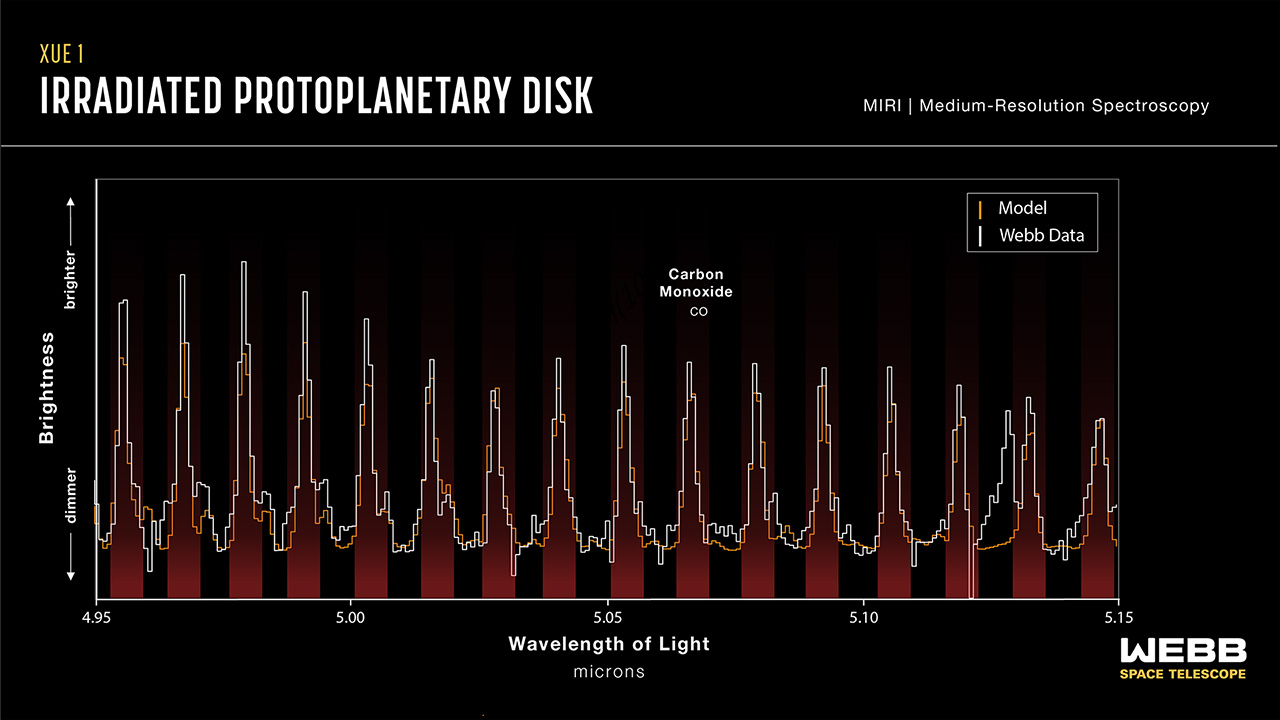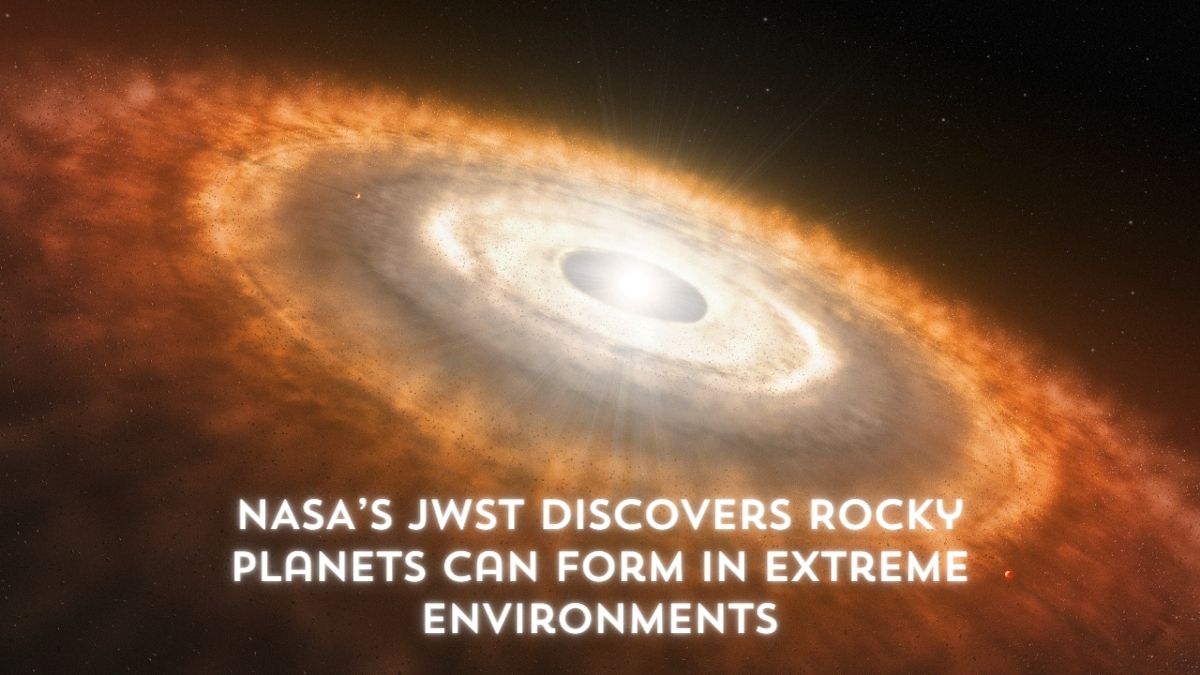A group of astronomers has used NASA’ biggest James Webb telescope to study the protoplanetary disk of rocky planet during planet formation. With aim to provide insights of water and other molecules in the rocky planets forming regions specially extreme environments. And they successfully did it, shows terrestrial planets or rocky planets formation can occur in a wide range of environments.
James Webb Telescope special program eXtreme Ultraviolet Environments (XUE) which focus on planet forming disk. Planetary disk means wide spread spinning clouds dust, rock and gas where planets form and evolve. This planet disc are present in the Massive star forming regions specially in the area of nebula. Massive star forming regions are likely the environment in which most planetary systems formed.
JWST’S XUE program study area of the Lobster Nebula, best known as NGC 6357. In which it studied total 15 disks in the three areas of NGC 6357 Nebula. Lobster Nebula (NGC 6357) is nearly 5,500 light years away from the Earth. It is one of the closest and youngest massive star formation factory. Lobster Nebula includes our galaxy’s massive stars, which emits high (UV) Ultraviolet radiation.

All this detection is possible due to Medium Resolution Spectrometer on webb’s Mid-Infrared Instrument (MIRI). Astronomers found first result by focusing on Protoplanetary disc turmed XUE 1, situated in star cluster Pismis 24.
After focusing on Protoplanetary disk termed XUE 1, they detected a wide range of molecules that are the building blocks for Rocky planets. It detects Water, Acetylene, Hydrogen Cyanide, Carbon Monoxide and Carbon Dioxide. All these molecules are detected in the inner disk of XUE 1.
Read More: ISRO’s Aditya L-1 Mission, Shares 1st Pic & Insights of Solar Wind
“We find that the inner disk around XUE 1 is remarkably similar to those in nearby star-forming regions,” said team member Rens Waters of Radboud University in the Netherlands. Lars Cuijpers of Radboud University said that,“We were surprised and excited because this is the first time that these molecules have been detected under these extreme conditions”.

These results shows that terrestrial planets can form in a wider range of environments that previously mentioned.
On the Marvelous telescope of NASA, one astronomer said that “Only the MIRI wavelength range and spectral resolution allow us to probe the molecular inventory and physical conditions of the warm gas and dust where rocky planets form,” member Arjan Bik of Stockholm University in Sweden.
